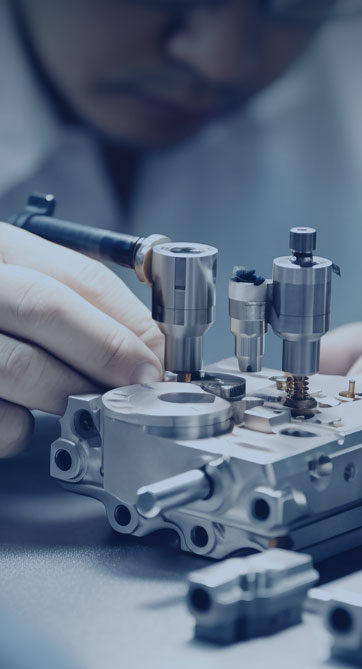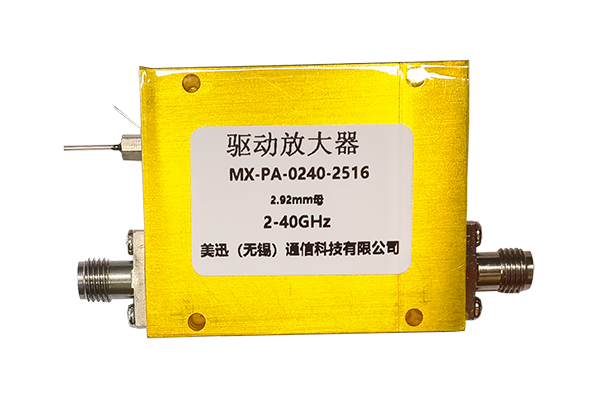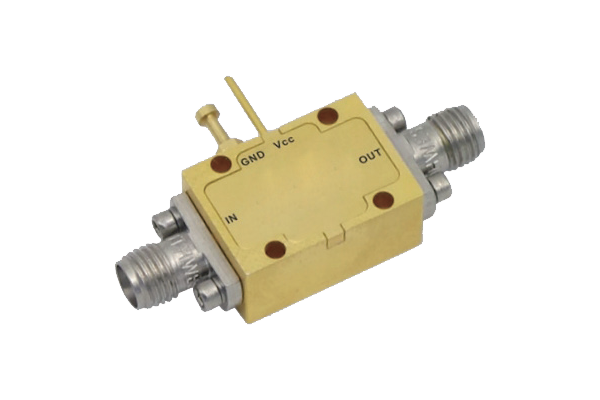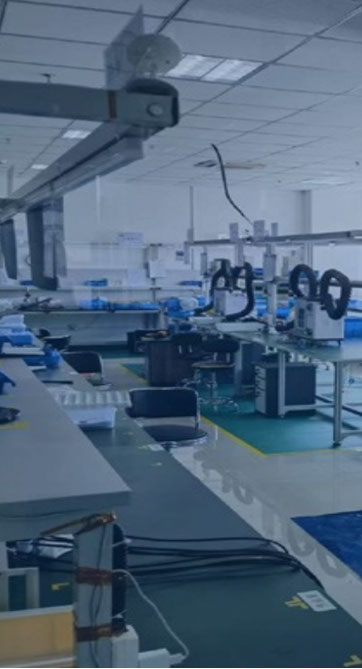
Pin diode technology has risen to prominence as an important building block in high-frequency designs thanks to its native electrical features Their fast toggling behavior plus small capacitance and reduced insertion loss renders them apt for use in switch modulator and attenuator circuits. The operative principle for PIN diode switching centers on bias-controlled current modulation. Biasing the diode adjusts the depletion region size in the p-n junction, changing its conductive state. By varying the bias level PIN diodes can be reliably switched to operate at high frequencies with low distortion
PIN diodes find placement inside complex circuit frameworks when precise timing and control is required They may be applied in RF filtering arrangements to selectively pass or reject particular frequency bands. Their high-power endurance makes them appropriate for amplifier power dividing and signal generation functions. The development of compact efficient PIN diodes has increased their deployment in wireless communication and radar systems
Study of Coaxial Switch Performance
Coaxial switch development is multifaceted and calls for precise management of several parameters Switch performance is contingent on the kind of switch operational frequency and its insertion loss attributes. Effective coaxial switch layouts strive to lower insertion loss and improve port-to-port isolation
Performance studies concentrate on return loss insertion loss and isolation measurements. Measurements rely on simulation, theoretical models and experimental test setups. Thorough analysis is critical for confirming reliable coaxial switch performance
- Simulation tools analytical methods and experimental techniques are frequently used to study coaxial switch behavior
- The behavior of a coaxial switch can be heavily influenced by temperature impedance mismatch and manufacturing tolerances
- Emerging developments and novel techniques in switch design concentrate on boosting performance while minimizing footprint and energy use
Low Noise Amplifier LNA Design Optimization
Improving LNA performance efficiency and gain is key to maintaining high signal fidelity across applications Successful optimization depends on proper transistor selection correct biasing and appropriate circuit topology. High quality LNA layouts suppress noise sources and deliver amplified signals with limited distortion. Modeling simulation and analysis tools play a central role in evaluating the impact of design decisions on noise. Reducing the Noise Figure remains the design target to ensure strong signal retention with minimal added noise
- Picking transistors known for minimal noise contribution is essential
- Setting proper and optimal bias parameters is necessary to suppress noise in active devices
- Circuit topology significantly influences overall noise performance
Methods including impedance matching cancellation schemes and feedback control boost LNA performance
Wireless Path Selection via PIN Switches

PIN diode based routing offers versatile efficient control of RF signal paths Their high-speed switching lets systems dynamically alter signal routing in real time. A major advantage of PIN diodes is low insertion loss and high isolation which reduces signal degradation. Use cases include antenna selection duplexer networks and phased array antennas
Switching depends on bias-induced resistance changes within the diode to route signals. In its open state the diode’s resistance is high enough to stop signal flow. With forward bias the diode’s resistance diminishes permitting the RF signal to flow
- Furthermore additionally moreover pin diode switches deliver fast switching speeds low power use and compact footprints
Various PIN diode network configurations and architectural designs can achieve advanced signal routing functions. Strategic interconnection of many switches yields configurable switching matrices for versatile path routing
Coaxial Microwave Switch Testing and Evaluation

Detailed assessment and testing validate coaxial microwave switches for optimal function across electronic systems. A range of factors like insertion reflection transmission loss isolation switching rate and bandwidth affect switch performance. Comprehensive assessment includes testing these parameters under multiple operating environmental and test scenarios
- Additionally the evaluation should incorporate reliability robustness durability and capacity to handle severe environmental conditions
- Ultimately the conclusions of a detailed evaluation deliver important valuable critical intelligence for choosing designing and refining switches for specific tasks
Thorough Review of Noise Reduction Methods for LNAs
LNA circuits are key elements in RF and wireless systems, amplifying faint signals while minimizing noise additions. This survey offers an extensive examination analysis and overview of approaches to minimize LNA noise. We explore investigate and discuss primary noise sources such as thermal shot and flicker noise. We further consider noise matching feedback solutions and biasing best practices to lessen noise. It showcases recent advancements such as emerging semiconductor materials and creative circuit concepts that reduce noise figures. Providing comprehensive insight into noise management principles and approaches the article benefits researchers and engineers in RF system development
Applications of Pin Diodes in High Speed Switching Systems

PIN diodes display exceptional unique and remarkable characteristics making them suitable for high speed switching Reduced capacitance and low resistance yield fast switching performance suitable for strict timing control. Their proportional voltage response enables controlled amplitude modulation and reliable switching behavior. Their adaptability flexibility and versatility qualifies them as suitable applicable and appropriate for broad high speed uses They are applied in optical communications microwave systems and signal processing equipment and devices
Integrated Coaxial Switch and Circuit Switching Solutions
Integrated circuit coaxial switching technology brings enhanced capabilities for signal routing processing and handling within electronics systems circuits and devices. These specialized integrated circuits enable control management and routing of coaxial signals with high frequency performance and low latency insertion times. IC miniaturization supports compact efficient reliable and robust designs appropriate for dense interfacing integration and connectivity contexts
- With careful meticulous and rigorous deployment of these approaches developers can accomplish LNAs with outstanding noise performance enabling trustworthy sensitive electronics By meticulously carefully and rigorously adopting these practices designers can deliver LNAs with excellent noise performance supporting reliable sensitive systems By rigorously meticulously and carefully implementing these techniques practitioners can achieve LNAs with remarkable noise performance for sensitive reliable electronics By meticulously carefully and rigorously applying these methods developers can produce LNAs with superior noise performance enabling sensitive reliable electronics
- Deployment areas span telecommunications data communications and wireless networking environments
- Coaxial switch IC implementations support aerospace defense and industrial automation applications
- Application examples include consumer electronics audio video products and test measurement systems
Low Noise Amplifier Design for mmWave Systems

LNA engineering for mmWave bands involves dealing with increased attenuation and heightened noise impacts. Parasitic capacitances and inductances become major factors at mmWave demanding careful layout and parts selection. Minimizing mismatch and maximizing gain remain critical essential and important for mmWave LNA performance. Choice of active devices such as HEMTs GaAs MESFETs or InP HBTs is crucial to reach low noise figures at mmWave. Additionally furthermore moreover careful design implementation and optimization of matching networks is vital for efficient power transfer and impedance matching. Attention to package parasitics is crucial as they have potential to harm mmWave LNA performance. Implementing low-loss transmission lines along with proper ground plane design is essential necessary and important for reducing reflection and ensuring bandwidth
PIN Diode RF Characterization and Modeling Techniques
PIN diodes are vital components elements and parts used throughout numerous RF switching applications. Precise accurate and comprehensive characterization of these devices is essential to support design development and optimization of reliable high performance circuits. Included are analyses evaluations and examinations of electrical voltage and current characteristics such as resistance impedance and conductance. Additionally frequency response bandwidth tuning properties and switching speed latency or response time are assessed
Moreover additionally the crafting of accurate models simulations and representations for PIN diodes is essential crucial and vital for predicting RF behavior. Various numerous diverse modeling approaches exist including lumped element distributed element and SPICE models. Selecting an appropriate model simulation or representation depends on the specific detailed application requirements and the desired required expected accuracy
High End Approaches for Low Noise Amplifier Design
Developing LNAs involves diligent consideration of circuit topology and components to obtain optimal noise performance. Emerging novel semiconductor developments have allowed innovative groundbreaking sophisticated design strategies that cut noise considerably.
Notable techniques include employing utilizing and implementing wideband matching networks incorporating low-noise transistors with high intrinsic gain and optimizing biasing schemes strategies and approaches. Additionally advanced packaging solutions and thermal management approaches are key to cutting noise contributions from external factors. By meticulously carefully and rigorously applying these methods developers can produce LNAs with superior noise performance enabling sensitive reliable electronics
